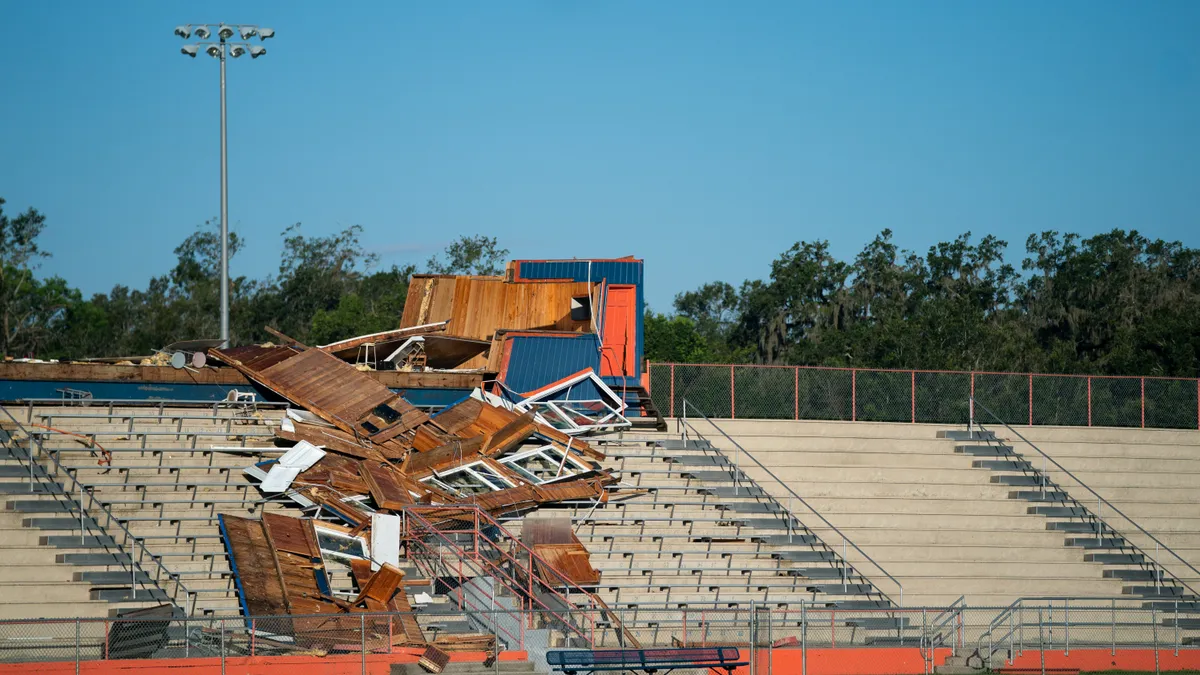Dive Brief:
- Climate Action Campaign, a group of national environmental and public health organizations, has published a school closure story map that tells where classes have been canceled due to extreme weather events.
- The website, published Thursday, shows public and private K-12 school closures based on news reports in six states — Arizona, Georgia, Michigan, Nevada, Pennsylvania and Wisconsin — where the Climate Action Campaign has increased presence.
- The organization said showcasing climate change-related school closures demonstrates the impact that more frequent and intense climate events are having on the health, well-being and education of children.
Dive Insight:
As the story map was released this week, schools in Pennsylvania, Michigan, Ohio and other localities canceled classes or after-school activities due to extremely high temperatures. In Massachusetts, Lowell Public Schools canceled classes Thursday and Friday because "the temperatures in many classrooms are expected to be too hot for teachers to teach effectively," a notice on the district's website said.
In the past month, schools in Hawaii closed after wildfires impacted areas in Maui, and several Florida districts shut down in anticipation of Hurricane Idalia.
“Sure, weather has always impacted school closures, but what we are seeing in recent years is more frequent extreme weather events, with more damaging outcomes, driving more school closures and more time away from the classroom for students,” said Margie Alt, director of the Climate Action Campaign, in a statement.
The country's two largest teachers unions — the American Federation of Teachers and the National Education Association — joined in making the announcement about the story map.
"It’s inhumane and counter to all logic to allow students and educators to sit in 95-degree classrooms, leaving students unable to concentrate on learning or even forcing schools to close due to high heat and humidity levels,” said NEA President Becky Pringle, in a statement.
A 2022 report by the U.S. Government Accountability Office found districts that received federal disaster recovery grants following natural disasters in 2017-19 had higher populations of vulnerable students, including low-income, minority, English learner or special needs, compared to other districts nationwide.
The report also found these vulnerable groups also faced “heightened challenges recovering from recent natural disasters." The challenges included emotional, academic, financial and physical recovery.
Students with disabilities are particularly impacted by natural disasters, said a May report from the National Council on Disability. These students face unique challenges during emergency responses and evacuations that can cause long-term harm to their mental and physical health and academic outcomes, the report said.
After storms have passed, the inability to access student records and the underfunding of education programs can further hurt progress for students with disabilities, according to NCD.
Climate Action Campaign's school-closure story map gathers information about school cancelations through news reports. It will be updated weekly through Oct. 31 and then as needed from Nov. 1 through March 31. Weekly updates will start again April 1, according to the organization.














